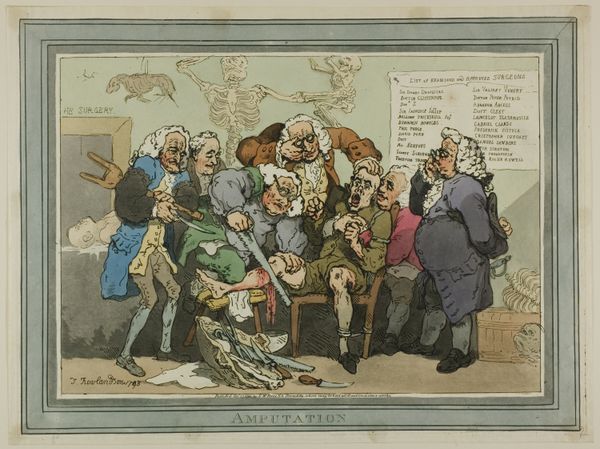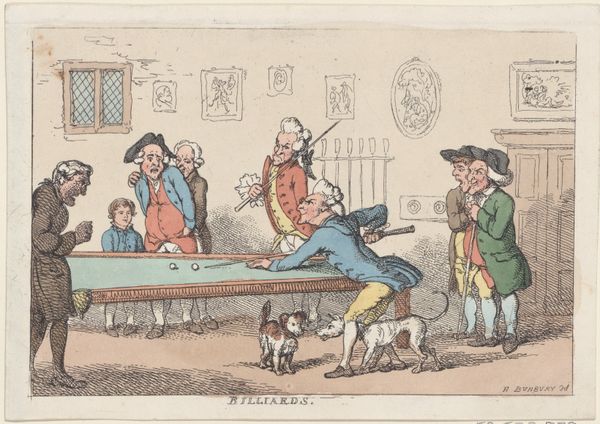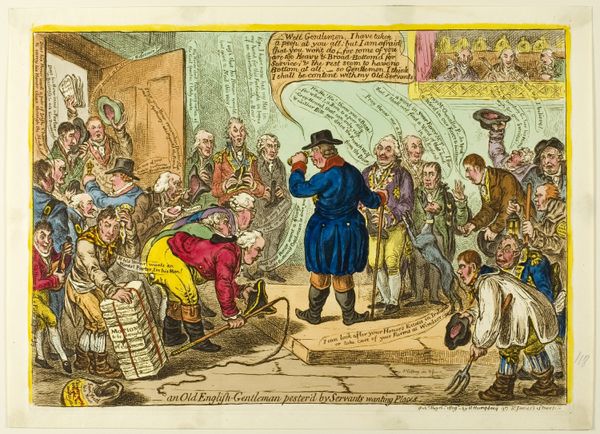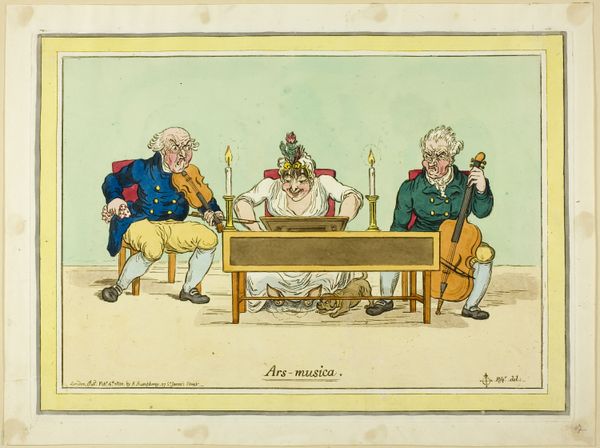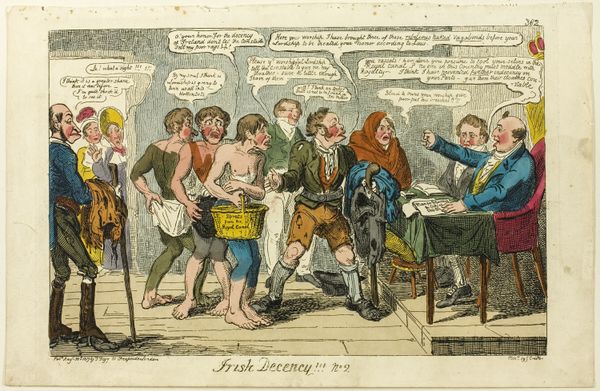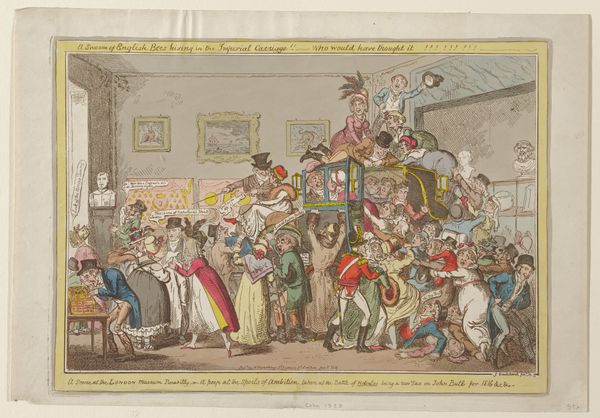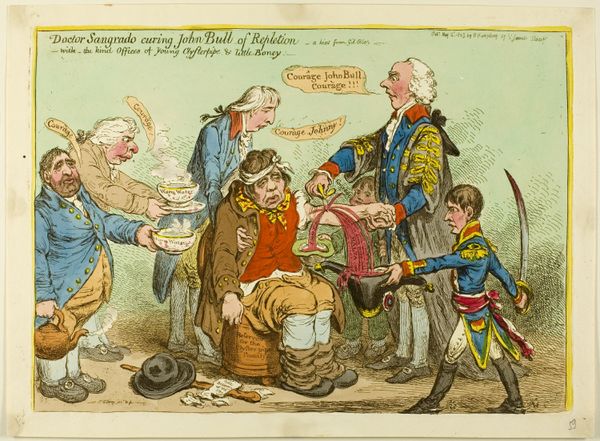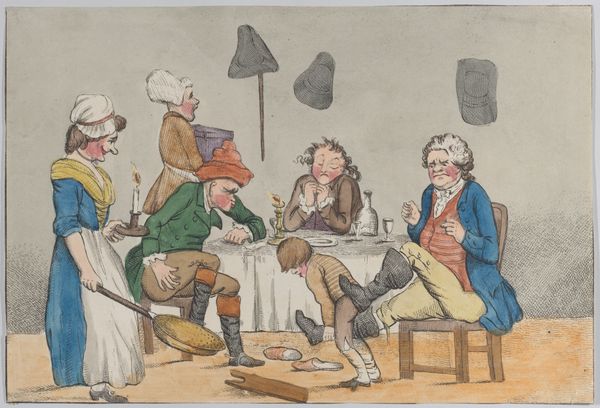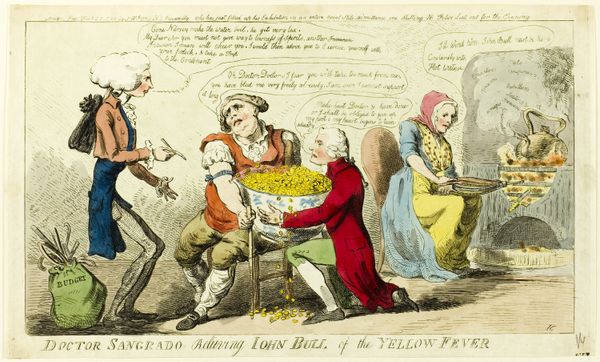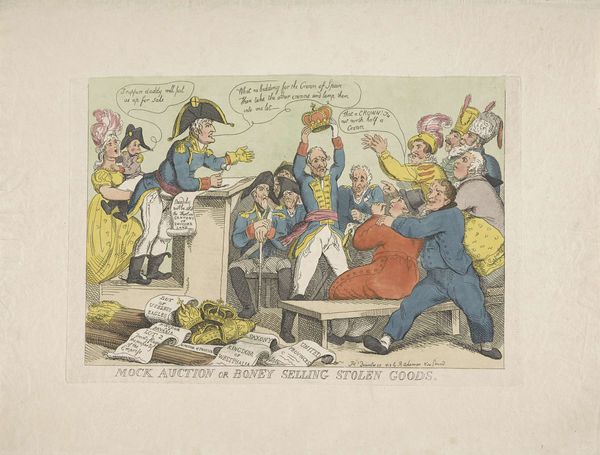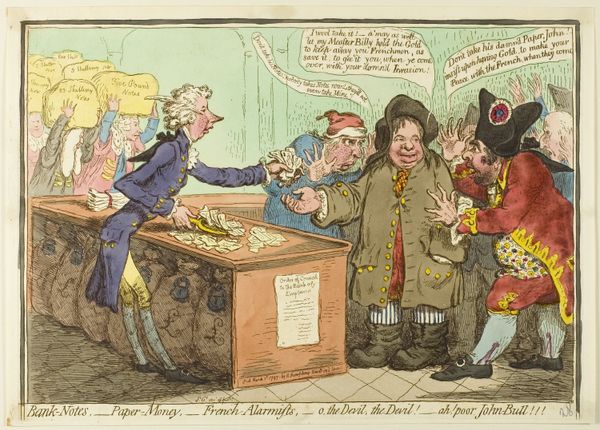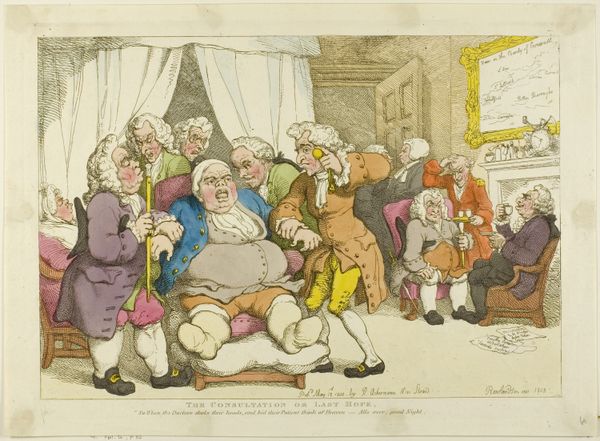
drawing, print, etching, paper, pencil
#
portrait
#
drawing
# print
#
etching
#
caricature
#
paper
#
coloured pencil
#
romanticism
#
pencil
#
genre-painting
Dimensions: 252 × 355 mm (image); 255 × 360 mm (plate); 288 × 395 mm (sheet)
Copyright: Public Domain
Editor: This is "Playing in Parts," a colored etching by James Gillray, possibly from 1801, now at the Art Institute of Chicago. The scene is so chaotic! What first strikes me is how each figure seems to be performing in isolation, contributing to a general sense of discord. How do you interpret this work? Curator: Focusing on its formal composition, the artist’s use of caricature immediately suggests a critical perspective. Note the exaggerated features, especially the pronounced noses and contorted facial expressions. What is the effect of this exaggeration? Editor: It makes everyone look… unpleasant and emphasizes an emotional distance, or tension, between the musicians. They aren't harmonizing in any sense! Curator: Precisely. The unbalanced composition also contributes to this unease. Observe the positioning of the figures, crowded yet disconnected. And the palette reinforces the lack of harmony with its clashing reds, greens and yellows. Editor: So, the discordant image parallels the "Playing in Parts" title, reinforcing its disruptive quality. What does the artist suggest about music or performance? Curator: Through these formal choices—caricature, composition, color—Gillray highlights the disjunction, or perhaps the pretentious artificiality, within the musical gathering. Do you notice any implied critique of societal manners? Editor: Looking closer at the clothing, the lavish wigs and garish colours speak to a particular social class, and maybe a dig at their pretensions. Curator: Yes. Through astute visual analysis, we observe that Gillray is using artistic language to present a satirical commentary. The formal components serve his critique. Editor: Thank you, I’ve certainly noticed more through deconstructing the piece into form and composition. Curator: My pleasure. It’s amazing what details emerge through this analytical method, isn't it?
Comments
No comments
Be the first to comment and join the conversation on the ultimate creative platform.
